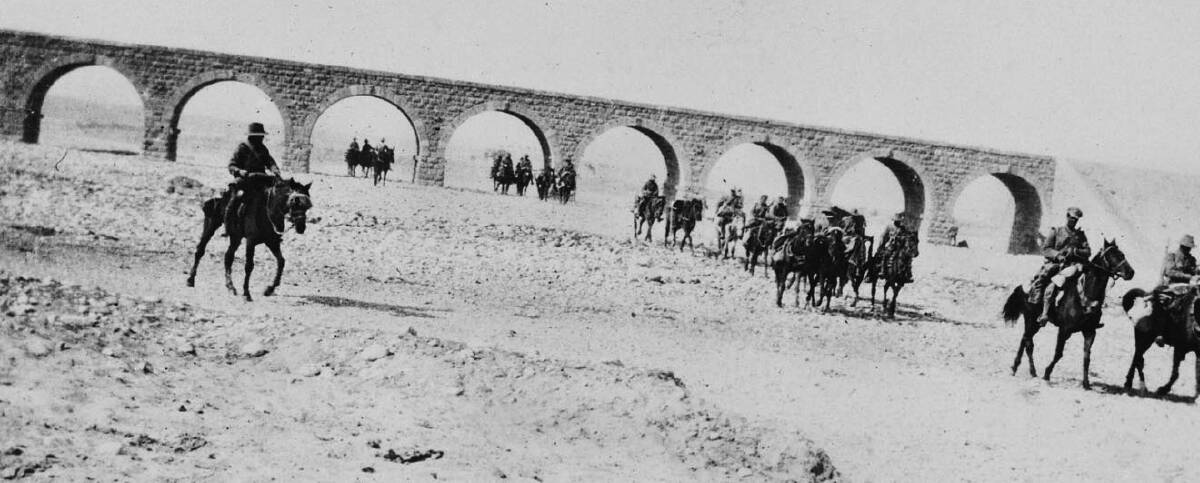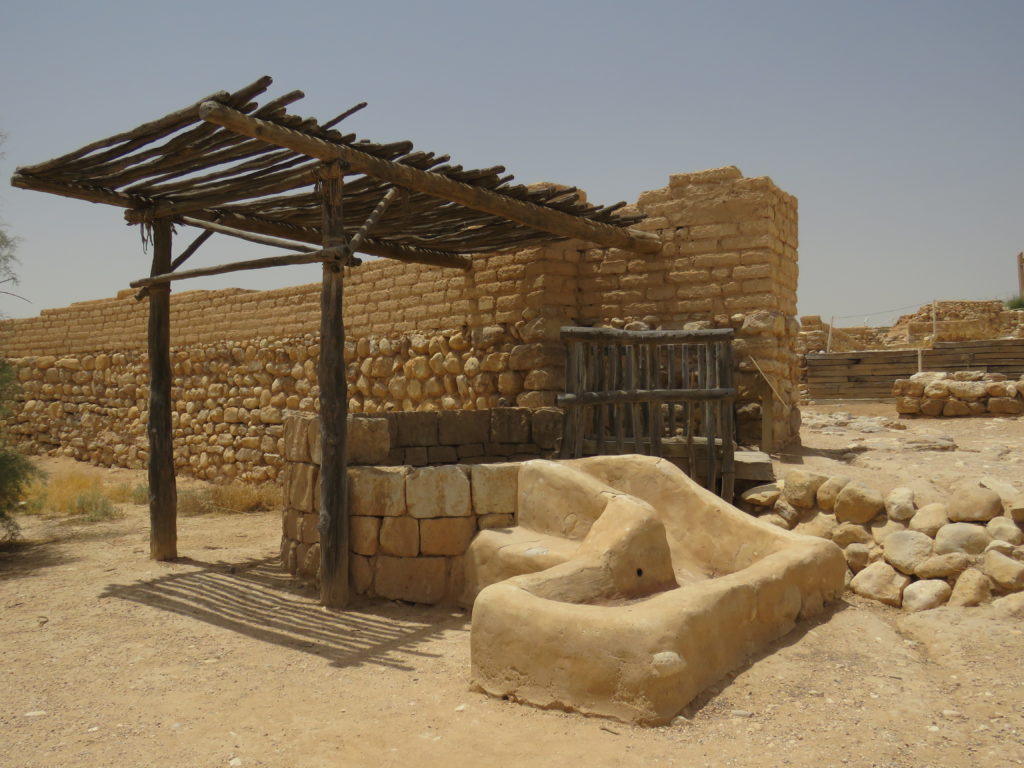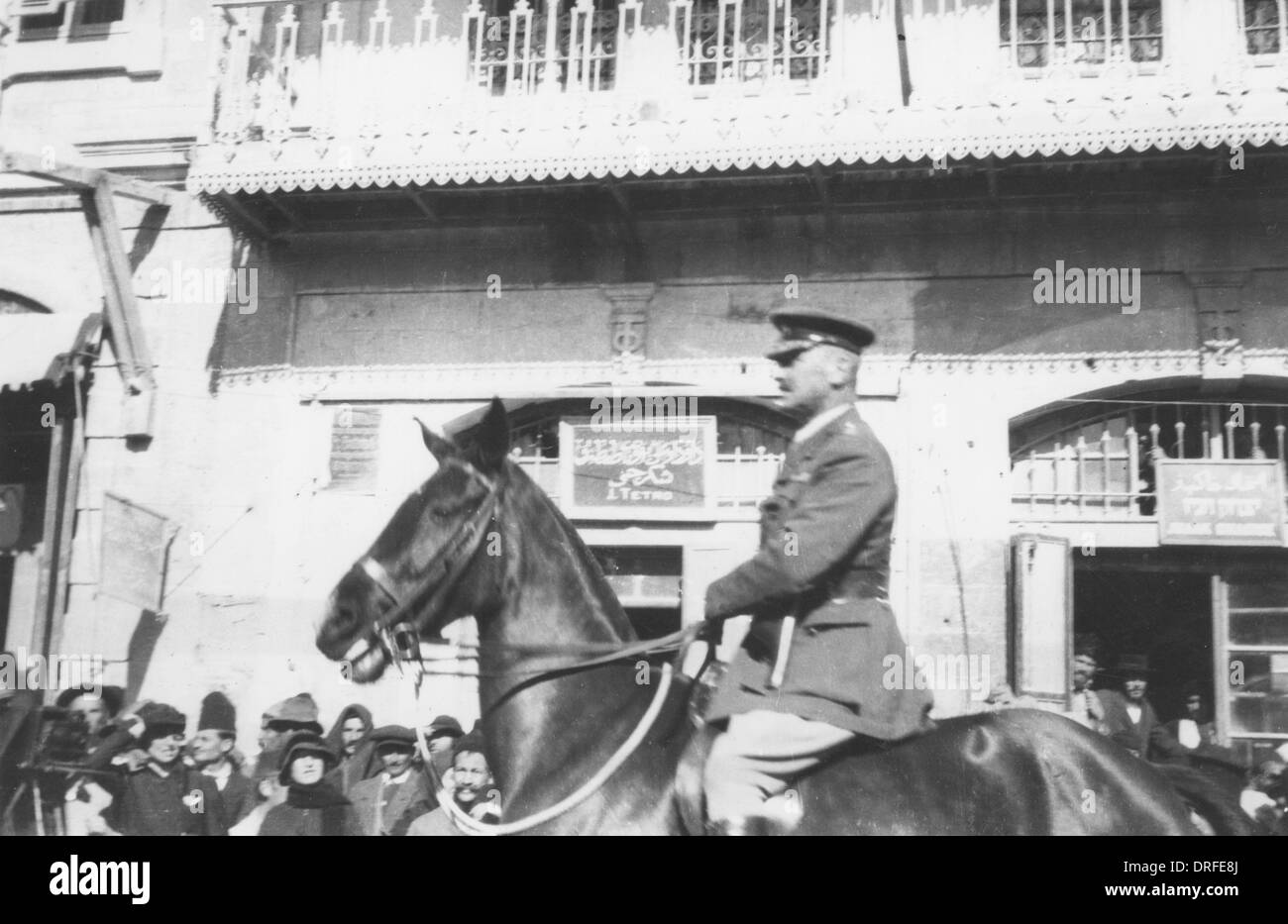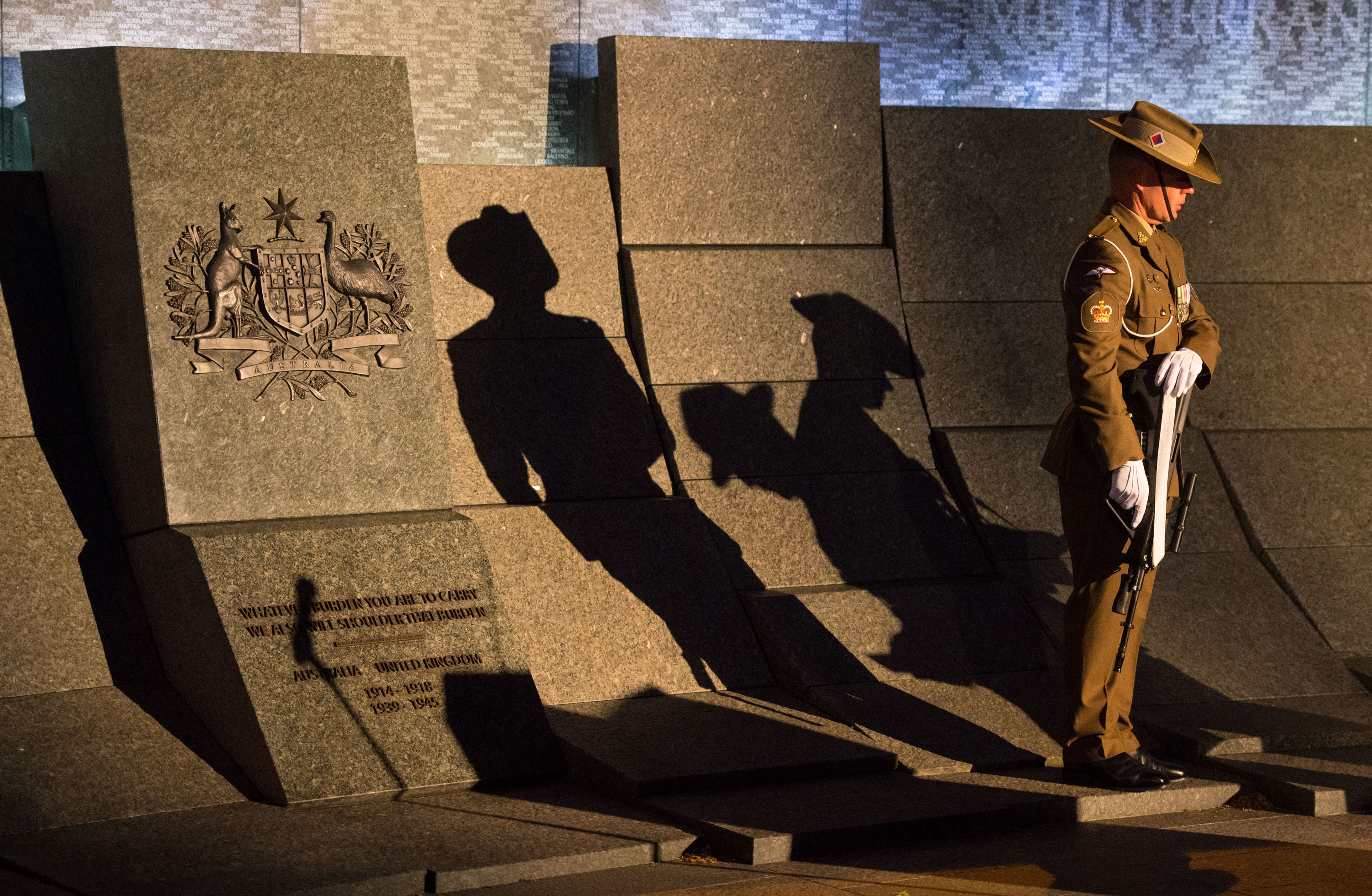Beersheba is a name that should resonate with every Australian with the same ease and reverence as Gallipoli.
Sadly it does not.
Because the charge on the desert city of Beersheba on 31st October, 1917 is the most outstanding piece of military daring and execution ever undertaken in the military history of the World.
On that day 800 members of the Australian 4th Light Horse Brigade of the Imperial Mounted Division brought a stunning victory from the jaws of defeat and started the dismembering of the Ottoman Empire.
The attack began in the late afternoon by this unique breed of men riding a unique breed of horse. It is widely described as the last great cavalry assault yet the participants were not cavalry; they were mounted infantry.

The difference is that cavalry went into battle and fought on horseback with swords, sabres and lances. Mounted infantry carried only their trusty .303 Lee Enfield rifles slung across their backs, a bandolier of ammunition slung across their chest, bayonets in scabbards and pistols in holsters attached to their belts. They approached the scene of the battle on horseback to as near as they could. They dismounted fixed bayonets and proceeded on foot to engage the enemy in hand to hand fighting.
Imagine being there?
The basic unit is a section of four men. When the section dismounts one of the four is nominated as the horse handler. His job is to lead the four horses away to a safer location away from the gunfire and return them when the fighting is finished. The other three attend to the fighting. Eight sections make up a troop and four troops make up a squadron. Three squadrons make up a regiment.
Beersheba was at the Eastern end of a defence line known as the Beersheba-Gaza Line. It was a strongly built and manned defence line about 50kms in length made up of trenches and fortifications stretching from the Mediterranean Sea into the edge of the Negev Desert where Africa merges into Asia. The key attraction of Beersheba is its wells. Water is the vital commodity in any desert campaign and there were about 15 operative wells there including “Abraham’s Well” which is reputed to have been dug by Abraham himself.
In 1915 the Turks attacked and attempted to capture the Suez Canal. They got to within 25 miles and some elements actually crossed it on pontoons but were repelled and driven back to the Beersheba-Gaza Line where the British Army had tried in vain to penetrate without success. The commander of the British force, known as the Egypt Expeditionary Force, was General Sir Archibald Murray, appointed in January, 1916.
Murray mounted a campaign that was to last for three years before the surrender of the Turks at Damascus in 1918. He had at his disposal 20 divisions of regular and mounted infantry but soon after 10 of these divisions were transferred to the Western front. He was left with four poorly trained British Territorial infantry divisions and six divisions of inexperienced British yeomanry. The only tried and tested units were the mounted ANZACS comprising the Australian Light Horse and the New Zealand Mounted Rifles.
The 3rd Light Horse Brigade was a mounted infantry brigade of the Australian Imperial Force (AIF), which served in the Middle Eastern theatre of World War I. The brigade was initially formed as a part-time militia formation in the early 1900s in Victoria. In 1914, the brigade was re-constituted as part of the AIF. The brigade first saw action while serving with the Australian and New Zealand Army Corps during the Gallipoli campaign where they were noted for their attack during the Battle of the Nek. After being withdrawn to Egypt in February 1916 they were involved in the Sinai and Palestine Campaign until the end of the war. They were attached to a number of different formations being part of the Anzac Mounted Division in March 1916 and the Australian Mounted Division in June 1917, who they remained with until the end of the war. After the war, the AIF light horse regiments were demobilised and disbanded; however, the brigade briefly existed as a part-time militia formation in New South Wales until 1921 when its regiments were reorganised into cavalry brigades.
Murray’s plan was to build a pipeline and a railway along the coast from Egypt to as far as he could advance. The coastal route was chosen because it had a series of wells so that the water problem was at a minimum. Access to water was also a need of the Turks and the progress was inordinately slow. There were many major battles not well executed because Murray and his staff were set up in the Savoy Hotel in Cairo, 220 miles away from the fighting and tried to run the campaign from there. British losses were heavy and the Beersheba-Gaza Line remained intact.
Murray was a most unpopular commander. In June,1917 he was replaced by Field Marshall Allenby. Allenby was a “hands-on” soldier and immediately moved the HQ to the front. At the same time he promoted Harry Chauvel, the Australian Light Horse commander to the rank of Lieutenant General and appointed him as commander of The Desert Mounted Corps, known as The Desert Column. This formation was made up of the Anzac Mounted Division, the Australian Mounted Division, the New Zealand Mounted Rifles Brigade plus British yeomanry and Indian troops. A force of some 34,000 men. The largest mounted force ever assembled since the days of Alexander the Great who conquered Egypt in 336BC.
After two failed attempts to crush the Turks at Gaza, Allenby and Chauvel turned their attention to Beersheba. For months the Australians spent their time combing the desert south and east of Beersheba for water. They established a forward base at Shellal, an oasis with brackish water, midway between Gaza and Beersheba just south of the Turkish trench system. At the same time the engineers blew up the railway bridges and 21 kilometres of track adjacent to Beersheba as it could have been used to outflank the attackers.
At the same time the British and Indian infantry were employed to start diversionary actions at Gaza allowing the Turks to think that another battle was being planned. The engineers also found a natural oasis that offered cover for a covert force advancing on Beersheba.
As the sun rose over Palestine on 31st October, Allenby ordered Chauvel to have the Anzac and Australian Mounted Divisions ready for battle on the east and south-east approaches to Beersheba. For weeks and months the light horsemen dribbled in small groups from their positions around Gaza across to the start point without alerting the Turks or the Bedouin Arabs of what they were doing. On 31st October the British navy bombarded Gaza from seaward to convince the Turks that Gaza was the objective. Turkish HQ at Constantinople were convinced that lack of water would make an attack on Beersheba impossible but vast quantities of water were brought across the desert by camel to a point mid-way between their two points.
The meagre supplies were enough to get the light horsemen to Beersheba. If they failed, the retreat back across the desert would have resulted in the loss of hundreds of horses and soldiers as there was no provision for an escape plan. At 4.30pm on 31st October the Light Horsemen assembled about 5 miles south of the town. Many had been without water for 50 hours and others for 24. A retreat to safety would have taken another 24 hours.
Chauvel’s plan was to simply confront the Turk defences in a cavalry type charge and for this he selected the 4th Brigade under a newly appointed brigadier, Lieutenant Colonel William Grant, a pastoralist from the Darling Downs of Queensland.
As the sun set in the west, the 4th Light Horse started towards the trenches at a trot about 6 kilometres out. They then increased spend to a gallop by which time the Turkish defensive canon opened up. About a mile out the horses got a sniff of the water from the wells and it became a stampede. Nothing could stop the horses now that they had the sniff of water and very soon the brigade was “under the guns”. The expression “under the guns” means that an artillery piece or heavy machine gun cannot lower its trajectory to sight an oncoming attacker and its shots carry over the heads of the attacking force.
The Turk defenders assumed that the light horsemen would, as usual, approach the trenches, dismount and continue on foot. The stampeding horses prevented that evenhad the troops wanted to and onward they charged clearing the trenches and on to the wells where the German officers had wired them for demolition.
The Germans were too slow and the Aussies captured all the wells bar one, intact. The Turkish defenders in the trenches were put to flight such was the ferocity of the attackers. One German officer captured in the battle said that the Australians were not soldiers, they were madmen.
The charge of the Light Horsemen was only one part of the bigger battle for Beersheba. Supporting the 4th Brigade were the other Australian mounted units and British infantry attacking and shelling the surrounding objectives. The charge was not taken in isolation. It was part of a comprehensive overall plan to break the Beersheba-Gaza Line and it succeeded beyond the most optimistic expectations.
Allenby’s force pursued the Turks relentlessly until they reached Jerusalem where the Australians led the army into the ancient city relieving it from Islamic bondage for the first time in over 1,000 years returning it to Christian domination.

There is a tight body of opinion among the Jewish community that the charge had been delivered directly by the hand of GOD fulfilling a promise to deliver the Children of Israel from Moslem bondage. I doubt if any, or many, of the troopers would have seen their actions in a biblical light but fact is there are more than a few Jewish people who genuinely believe to this day that it was the fulfilment of a promise from GOD. This belief is given further credence by the fact that it was on that day that the Balfour Declaration was made in the British Parliament. The Balfour Declaration was made by the then Prime Minister that Britain was committed to the creation of a homeland for the Jews in Palestine.

My final word lies with Malcolm who is reading the most powerful poem of the Beersheba Battle.
The ANZAC on the Wall.



















































